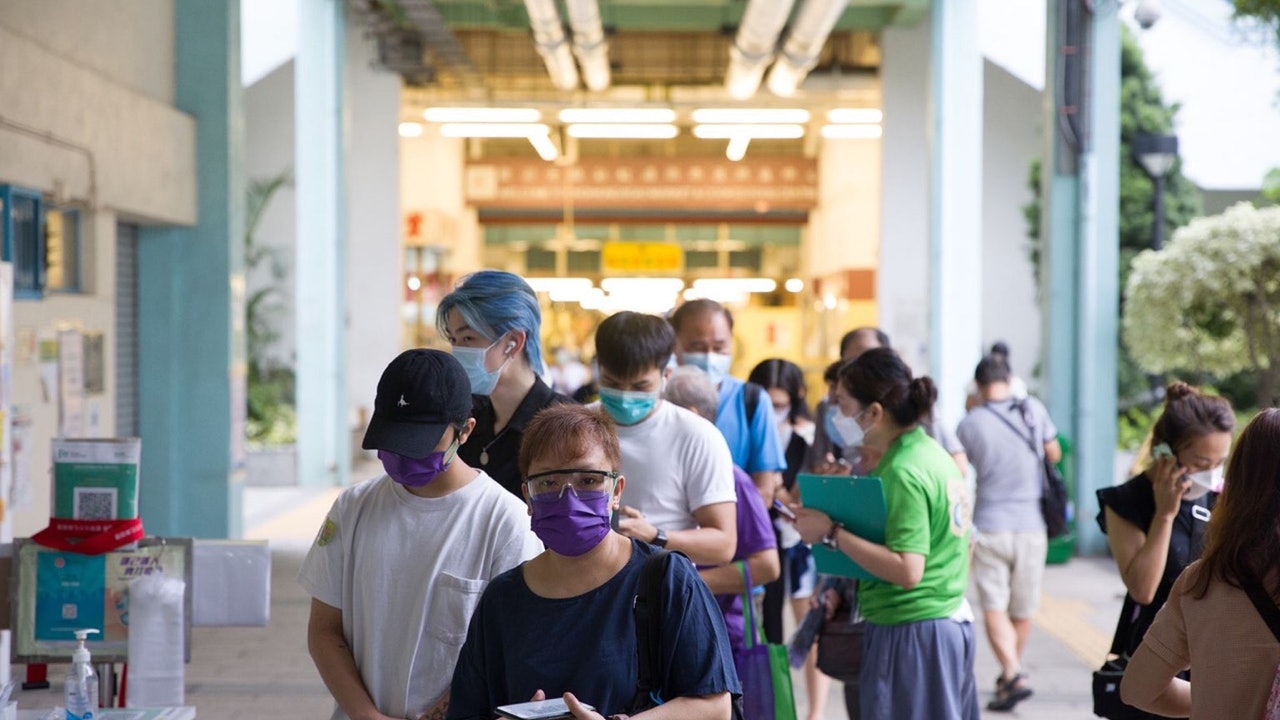Hong Kong’s new crown vaccination plan was officially launched on February 26 this year. In the past 174 days, 3.83 million people in Hong Kong have been vaccinated, accounting for 56.9% of residents aged 12 and over. This is still 13 percentage points short of the government’s original goal of universal immunity. In addition, 1.17 million more injections are needed before Xinhe Hehuazhi can send out the second luxury Kaihui unit for the lottery.
"Hong Kong 01" is based on the government's public vaccination figures, and uses the data to look at multiple key points of vaccination.
Taking the age of 10 as a group, about five adults from 12 to 69 years old have been vaccinated, with a 6-fold difference in the rate.
Citizens aged 40 to 49 who belonged to the "post 70s" were the most courageous. As of yesterday (18th), 73% of them had received the first dose of the vaccine, followed by the "post 60s" and "post 80s" groups.
One out of every two adolescents between the ages of 12 and 19 has been vaccinated; the rate of injections among the elderly is still lagging behind. Only one-third of the group between the ages of 70 and 79 have been vaccinated, and less than one in 10 people aged 80 or above. Only one of them, such as Li Ka-shing, a senior consultant of the Changhe Department, has been vaccinated.
▼From 6.14 onwards, teenagers between 12 and 15 years old can be vaccinated with Fubitai vaccine▼
+8
The number of appointments continued to decrease in the past week
As of last night, 3,827,807 residents in Hong Kong have received the first dose of the new crown vaccine, accounting for 56.9% of the vaccinable population; 2,991,647 of them have received the second dose, which is 44.4%.
In the past week, about 60,000 people received injections every day, and about half of them were given the first dose.
However, the number of appointments in the past week has continued to be less than 20,000, and the number of new vaccinations in the future is expected to decrease.
Population distribution of new crown vaccination (as of August 18).
▼Click to see the ratio of vaccines in each generation▼
+4
Half of the young people have been vaccinated, and only 10% of the elderly 80 years of age or older have been vaccinated
As of August 18, the number of people aged 40 to 49 who took the first dose reached 830,000, accounting for 73.1% of the same age, the highest among the eight age groups.
More than 60% of the 50 to 59 years old, 30 to 39 years old, and 20 to 29 years old groups have been vaccinated. The 50-59 year-old "post-60s" have the highest rate, reaching 67%. The remaining two groups are as follows 64.63% and 61.33%.
Exactly half of the residents aged 60 to 69 have received the first dose of the vaccine (a rate of 50.05%), which is likely to be caught up by the rising star "post-00s" aged 12 to 19. The difference between the two groups is only less than 0.3%. (The ratio of 12 to 19 years old is 49.78%).
The elderly worry about side effects and the risk of death, but it is still the most difficult problem for them to get vaccinated.
Only one-third of elderly people aged 70 to 79 have received injections, and when they are 80 years of age or older, the vaccination rate is only 10%.
+3
Among the residents who have been vaccinated, about two-thirds choose to vaccinate Fubitai vaccine, which is nearly double the number of selected KX vaccines.
Elderly people over 60 years old have chosen to receive Kexing vaccine more than Fubital, and the rate of receiving Kexing vaccine is nearly 60%.
▼On March 22, Chief Executive Carrie Lam led the Secretary to receive the second dose of Kexing vaccine▼
+5
▼On August 15th, citizens rushed to the community vaccination center for vaccination▼
▼On July 29, the community vaccination center will distribute same-day injections to the elderly▼
+1
In the early days of the new crown vaccination plan, some citizens were worried about side effects derived from the vaccine.
As of August 8, the Department of Health has received 4,927 reports of abnormal incidents.
As for the most common other abnormal events in the past half month, dizziness, chest discomfort, etc.
The most common report of Kexing vaccine is skin rash; the most common side effect of Fubitai vaccine is dizziness.
New crown vaccine abnormal event situation
(Hong Kong 01 drawing)
· As of August 8, the Department of Health has received 4927 reports of abnormal incidents
· A total of 43 deaths
▼See the details of the scheduled vaccination and side effects of Kexing and BioNTech in the three pictures▼
Covid-19 vaccine | More than three people had been vaccinated within 14 days before the death of four teenagers suspected of post-injection myocarditis Covid-19 vaccine | 61,300 injections in a single day were slightly lower than that of Monday 21 people sent to hospital with side effects after vaccination Covid-19 vaccine | Cumulative vaccination rate of 3.76 million injections 55.3% The number of single-day appointments has rebounded by 30%. New crown vaccine | University of Hong Kong Research: Facial paralysis increased by up to 5 people per 100,000 people. The benefit is higher than the risk. The new crown vaccine will be reviewed in September. Vaccines|Cumulative vaccination rate is 54.8%, only 11,700 people make appointments in a single day, a record low in nearly three months
01News

